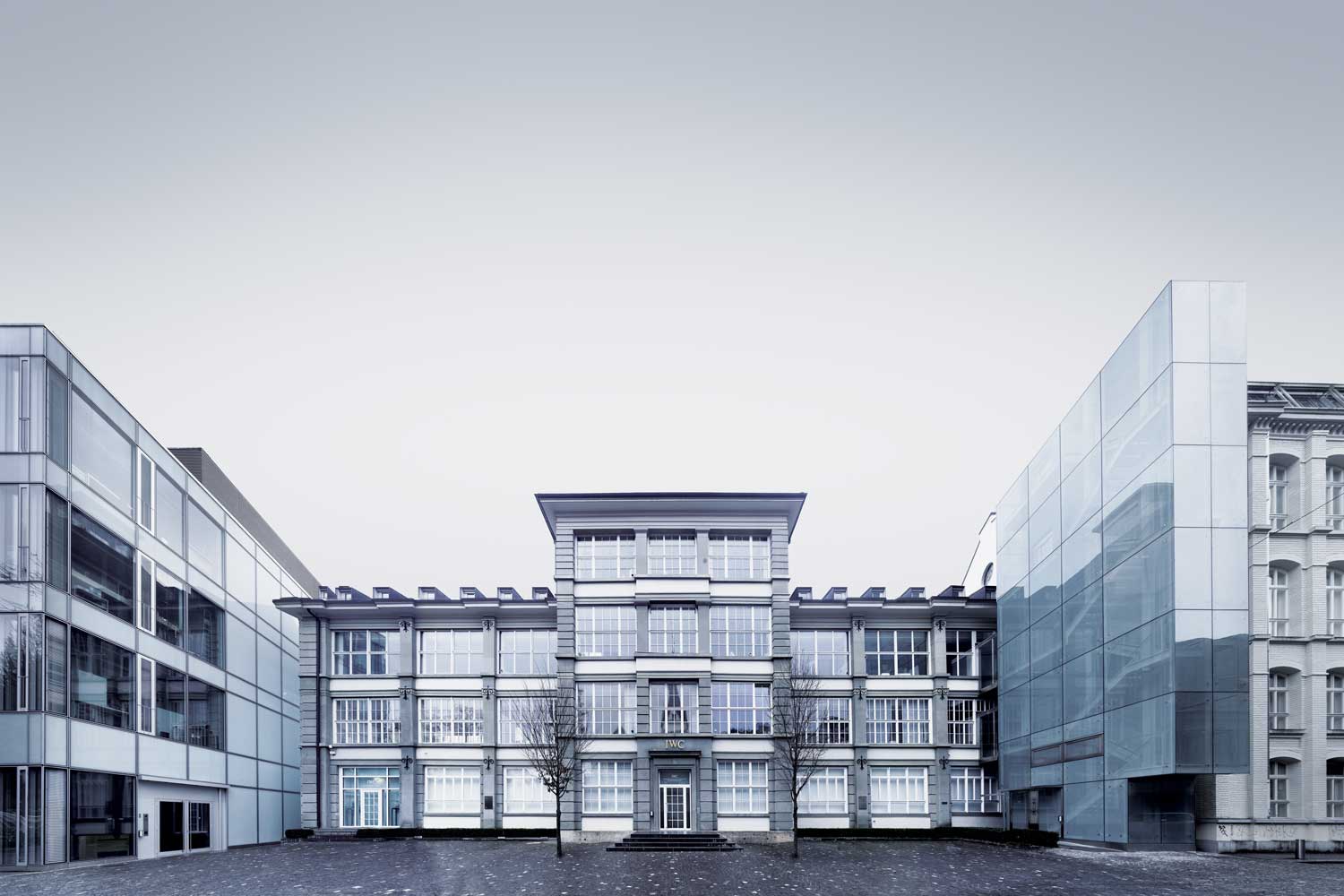IWC Schaffhausen
By the River Rhine
Mesopotamia, the oldest of recorded civilizations, was blessed by the Tigris and Euphrates rivers. Egypt has the Nile, China has the Yellow River, and the Indus River gave rise to the settlement that is the Indian subcontinent.
This is no mere coincidence but a matter of science and geography. These rivers were a source of life, of sustenance for the civilizations that took refuge next to their sides. However, a large part of the reason why these same civilizations grew from simple settlements into large thriving populations is because their rivers ultimately inspired the rise of industry.
Flowing water holds energy, which when harnessed allows man to explore his power to build and ultimately, create. But of all the famed rivers of history, there is one that is of particular importance to horology, specifically for its association with a very special manufacture that was born on its banks.
The river in question is the Rhine River, which starts in the Swiss canton of Graubünden in the southeastern Swiss Alps. It then forms part of the Swiss-Austrian, Swiss-Liechtenstein border, Swiss-German and the Franco-German border, before flowing through Rhineland and emptying out into the North Sea. Today, the largest metropolis along its 1,230km length is the city of Cologne. However, our city of interest, the city of Schaffhausen in northern Switzerland, lies quite early on in the river’s path.
You see, watchmaking had been a part of this city’s history as early as the 1400s and with the river flowing by its side, it was also quite a center for trade and business. But it wasn’t until in 1866, when a local industrialist by the name of Johann Heinrich Moser put the locality’s industrial progress on a fast track — by building a hydroelectric plant that tapped into the Rhine River — that things really took off.
Two years later, the availability of watchmaking talent and industrial fervor caught the attention of one Florentine Ariosto Jones. An engineer and watchmaker himself, the 27-year-old Bostonian had come to Switzerland in hopes of capitalizing on the country’s horological talent to build his own company. He was on a lookout at that point in time — assessing the many watchmaking localities in the country to see which one would best suit his ambition.

From training, to design and construction, the industrial spirit of IWC Schaffhausen is evident at every corner of the famed manufacture

From training, to design and construction, the industrial spirit of IWC Schaffhausen is evident at every corner of the famed manufacture
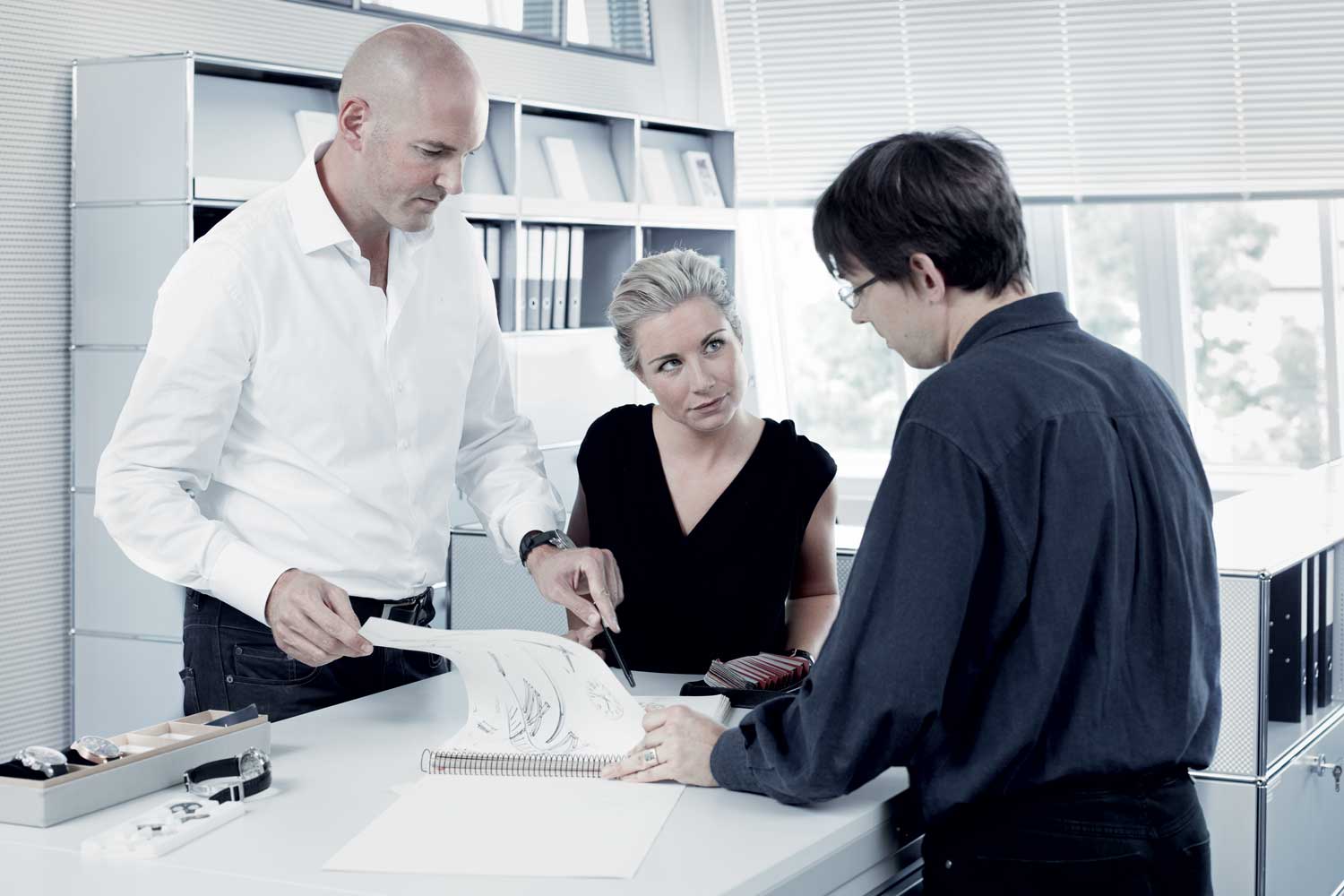
From training, to design and construction, the industrial spirit of IWC Schaffhausen is evident at every corner of the famed manufacture
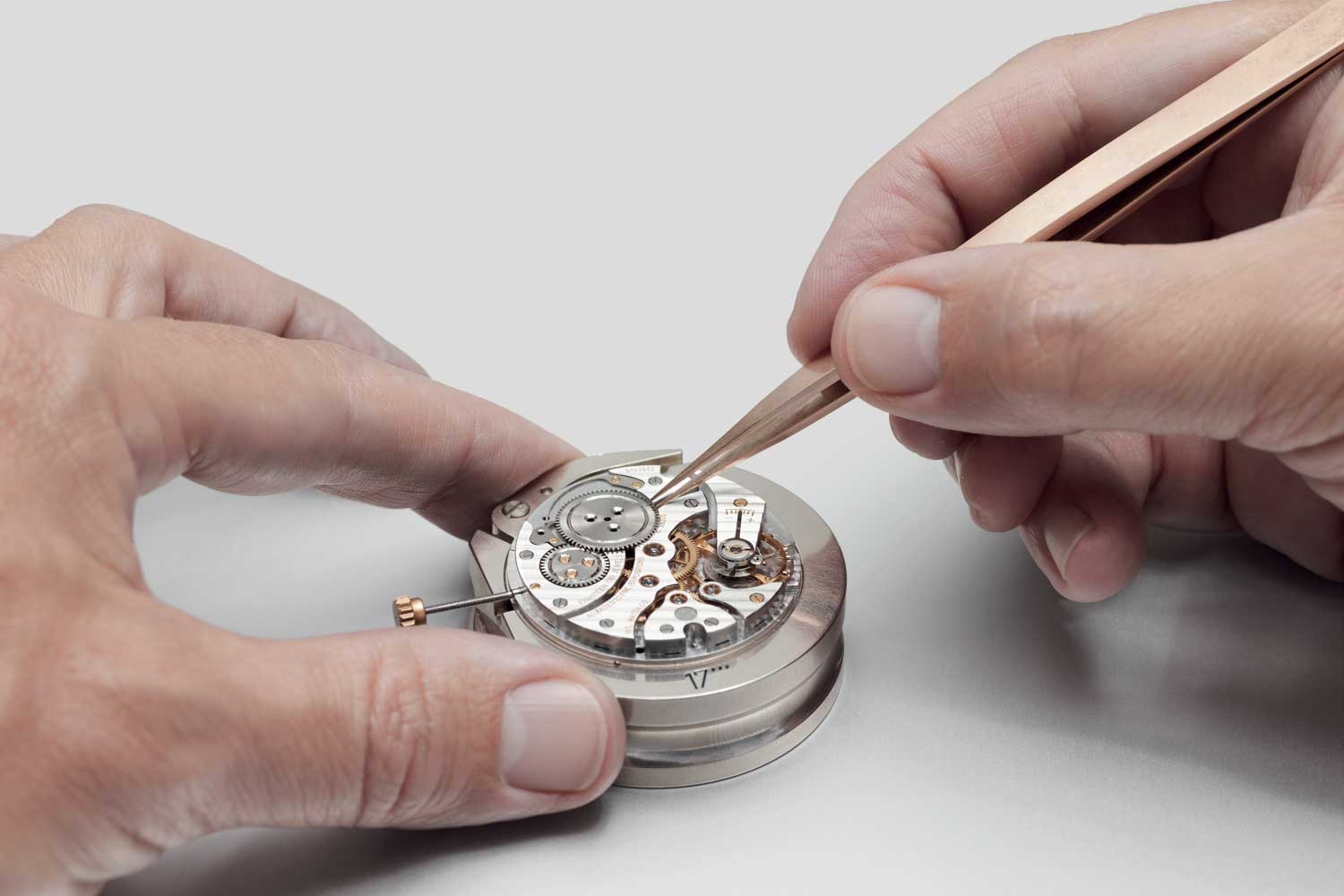
From training, to design and construction, the industrial spirit of IWC Schaffhausen is evident at every corner of the famed manufacture
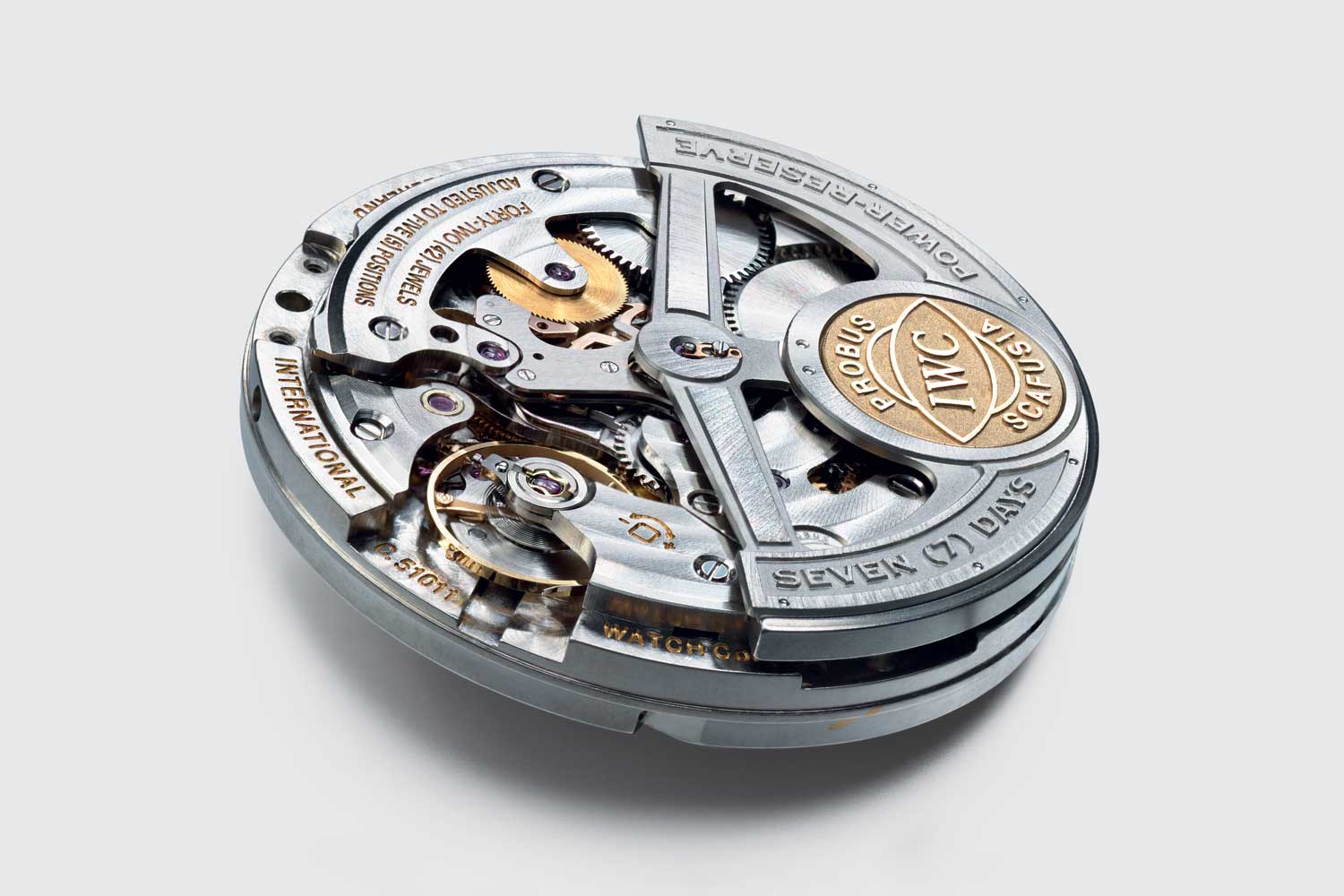
From training, to design and construction, the industrial spirit of IWC Schaffhausen is evident at every corner of the famed manufacture

From training, to design and construction, the industrial spirit of IWC Schaffhausen is evident at every corner of the famed manufacture
With the brand’s ever-growing ambition and the announcement in 2015 to further verticalize itself by progressively introducing more and more in-house-built calibers (even for its entry-level timepieces), IWC Schaffhausen has already outgrown its present facilities. A third building is presently under construction with these challenges in mind.
But a great brand is not just about its buildings and history; it is also about the people who continuously pour their heart and soul into a shared vision. Leading the charge here is none other than the eminent Georges Kern who has served as the brand’s CEO since 2002, at which point in time he was the youngest individual ever to have been appointed CEO within the stables of Richemont. It is Kern’s drive and foresight that continue to bring the company to new heights year on year. This attitude, though, is not unique to the CEO alone — it is apparent in every person who is a part of the IWC family. From the most senior, qualified watchmakers, who are tasked with the construction of IWC’s high-complication pieces, to those who lovingly wrap IWC timepieces in that protective plastic after final inspection, each member of the IWC team displays this fierce pride in the work they are entrusted with. Just in case you’re wondering about that last comment: yes, that plastic wrapping that you are so eager to undo, when you’ve made an acquisition, is done by hand at IWC.
Beyond the people who are already serving the company, IWC also has a training program set up for those wanting to become part of the company in the capacity of watchmakers and technicians. The three-year program accepts 14 exceptional individuals every year, who are instructed in the skills necessary to become a watchmaker and perform the rigorous servicing procedures at IWC.
What we find at the end of the day is that IWC’s heritage is rooted in industrial ambition. This is the same ambition that the Rhine inspired in the city of Schaffhausen centuries ago — the city which in turn inspired the ambitions of a young F. A. Jones in 1968. An ambition that, like the constant flow of the Rhine, continues to be IWC’s guiding principle, inspiring the company and its people to reach for ever-greater heights and ever-wider horizons in its unique watchmaking aspirations.
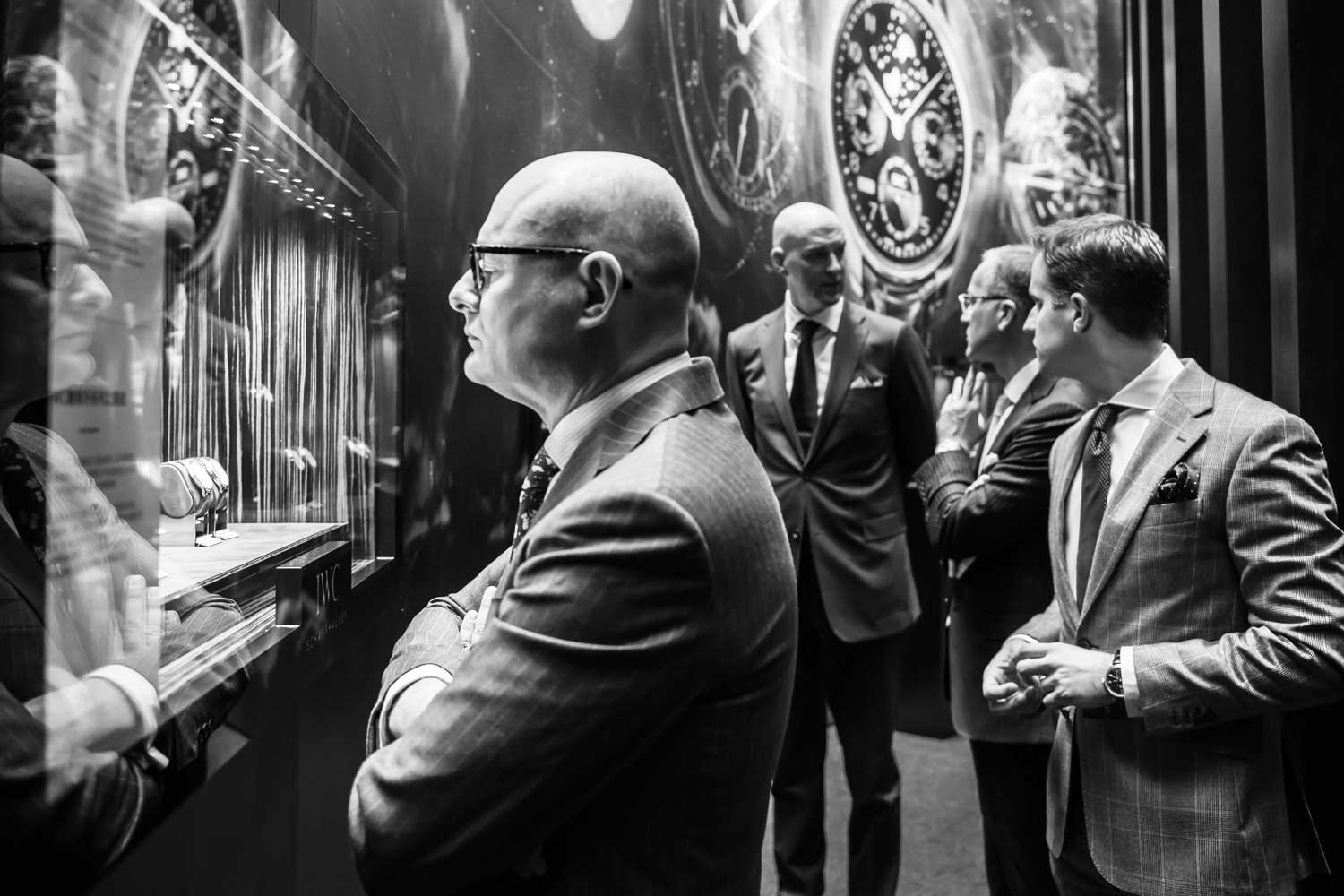
CEO Georges Kern examining the displays at the IWC booth at Watches & Wonders 2015
